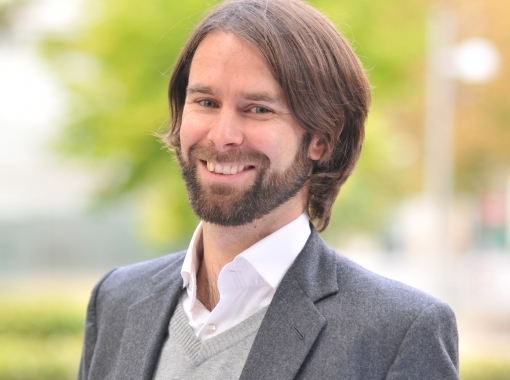
SEMANTiCS founding father and conference chair Tassilo Pellegrini is professor of economics at the Department of Media Economics of the University of Applied Sciences in St. Pölten, Austria and co-founder of the Semantic Web Company. In this interview Tassilo talks about his passion for LegalTech-Applications, the 15th Anniversary of SEMANTiCS Conference series and the benefits of participating in the SEMANTiCS conference.
Where do you see the actual reflection of on-the-edge research by this year’s conference?
This year’s SEMANTiCS conference addresses the convergence and intersections of machine learning techniques on the one side and semantic computing on the other. Both areas of research come from different traditions and school of thought, but are highly compatible and complementary. I.e. a combination of knowledge graphs with statistical analytics can help to compensate deficiencies that occur if each technology is applied in isolation. But to get there it is important to bridge the gaps between the various communities and build a shared understanding of each others’ concepts, terminologies and methodological approaches. So, what we can expect from SEMANTiCS 2019, is a vibrant and discourse-oriented meeting place of those people who define the standards and procedures of next generation knowledge technologies.
Hence, given the fact that those communities dealing with these technology area are not necessarily connected, SEMANTiCS 2019 will provide an opportunity to get together and exchange ideas, competencies and experiences. Thus we hope to foster innovation and inspire experts from various disciplines to collaborate and carry the things forward.
Let’s talk about AI? AI has seen many up and downs. How do you estimate the current situation. Is it more than a hype? Is AI finally here to stay?
Given the advances in machine learning, deep learning and knowledge representation we need to acknowledge that the kind of AI we nowadays have at our fingertips differs significantly from what we had before. Even if the engineering principles have not changed that much, the increase in storage and processing power in combination with the increasing amount of heterogeneous data makes the difference. Given also that a lot of advanced data processing techniques have already become integral components of daily applications we use at work, at home or as a support service of daily routines, I believe that AI has finally arrived, especially when we take the promises of the internet of things for granted. Especially the combination of machine learning techniques with knowledge representation and reasoning will change the nature we design, operate and apply AI-powered systems in the future. We have to be aware that these will be very powerful systems with a lot of transformative potential, probably requiring a profound ethical discourse and specific regulations. We are just starting to understand the impact of digitization.
You are one of the chairs of SEMANTiCS 2019. This year we celebrate the 15th anniversary of the SEMANTiCS Conference series. What has changed? What are the prospects?
SEMANTiCS’ aim was always to bridge the gaps between industry and academia, foster the exchange between these two worlds and inspire people to apply semantic technologies in a reasonable, yet creative but also critical manner. Additionally, SEMANTiCS always acted as a platform for researchers and practitioners alike, giving voices to those interested in the advancement of semantic computing and its intersections with other technology areas. Looking back to 2005 when the SEMANTiCS conference series was founded, I think we have been very successful with that and the core mission is still intact. One of the most important changes was the conference consortium’s decision to go international in the year 2013. Since then the impact of SEMANTiCS has grown. All of this would not have been possible without the support of so many people that have contributed to the conference series over the previous years. It is an honour and pleasure to have the opportunity to be part of this team. And we all hope that SEMANTiCS will be here to stay for many more years.
What do you have to say to potential SEMANTiCS participants who didn’t submit their work yet, researchers who face constraints in their projects or those who still have a lot on their ToDo-Lists before the calls close in April?
SEMANTiCS welcomes high level, cutting edge research and practical, down-to-earth solutions alike, which also make it such an interesting place to be and present your work. For researchers we offer high standard reviewing and publication options. I.e. this year’s scientific proceedings will be available open access by Springer LNCS. As a researcher whose work is at the brink to become an application, SEMANTiCS offers attractive opportunities to present their work to the interested public and gain feedback from professionals. This can be a poster, a demo or a hands on industry presentation. And of course all those engineers and technology managers who provide commercial applications and services built on top of semantic technologies will benefit from the conference’s outreach opportunities. All in all, the uniqueness of SEMANTiCS lies its ability to bring like minded people together and provide a setting where demand meets competence and creativity.
About SEMANTiCS
The annual SEMANTiCS conference is the meeting place for professionals who make semantic computing work, and understand its benefits and know its limitations. Every year, SEMANTiCS attracts information managers, IT-architects, software engineers, and researchers, from organisations ranging from NPOs, universities, public administrations to the largest companies in the world. http://www.semantics.cc